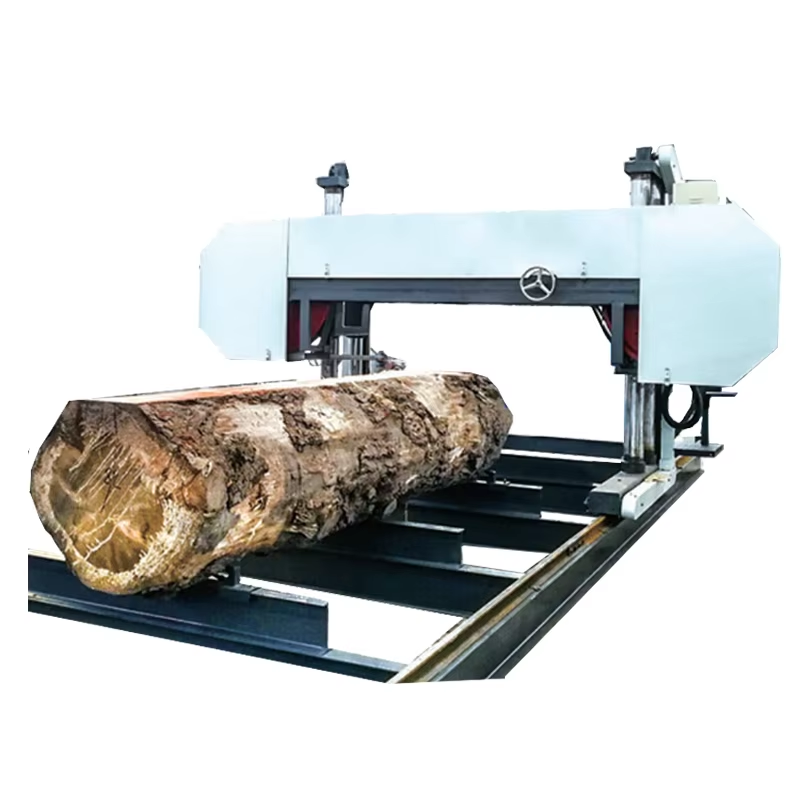Introduction to Horizontal Band Saw Machines
What is a Horizontal Band Saw Machine?
A horizontal band saw machine is a versatile cutting tool widely used in various industries, especially in metalworking and wood processing. It operates with a continuous band of toothed metal, called a blade, which is tensioned and used to cut through materials. The horizontal design allows for efficient cutting of long workpieces, making it ideal for both straight cuts and complex shapes.

Key Components of Horizontal Band Saws
Understanding the components of a horizontal band saw is crucial for maximizing its potential. The key parts include:
- Saw Blade: The core cutting element that can vary in size and tooth configuration based on the material being cut.
- Frame: A sturdy structure that holds the saw blade in a fixed position, ensuring stability during cutting.
- Drive System: Typically consists of a motor that powers the blade, allowing for smooth, continuous cuts.
- Table: Where the material is placed and supported during the cutting process, often adjustable for different sizes.
- Cooling System: This feature helps lubricate the blade and manage temperatures, extending the blade's lifespan and enhancing cutting efficiency.
Applications of Horizontal Band Saw Machines
Horizontal band saws are commonly employed in various sectors, including:
- Metal Fabrication: Used to cut precisely through steel, aluminum, and other metals utilized in construction and manufacturing.
- Woodworking: Ideal for cutting lumber and thick boards into specified dimensions or shapes.
- Automotive: Employed to create specific parts and components that require precise cuts.
- Aerospace: Used for fabricating parts from alloys and high-strength materials.
Benefits of Using Horizontal Band Saws
Precision and Accuracy in Cutting
One of the most significant advantages of horizontal band saws is their ability to deliver precise and accurate cuts. The fixed blade angle and tension maintain consistent pressure throughout the cutting process, significantly reducing the likelihood of blade drift and ensuring uniformity across all cuts.
The dual column design in advanced models enhances rigidity, resulting in superior cut quality and longer blade life, as seen in machines like the Cosen C-620NC with its robust construction for stability.
Efficiency and Productivity Enhancements
Horizontal band saws are designed for high efficiency, significantly speeding up production times compared to manual cutting methods. They can cut multiple pieces simultaneously, enabling faster workflows. Furthermore, features like automated feeding and adjustable settings for different materials contribute to a notable increase in overall productivity.
Moreover, the low energy consumption and resource-saving design of machines like the BEHRINGER HBE261A Dynamic make them environmentally friendly choices for industry.
Choosing the Right Horizontal Band Saw Machine
Factors to Consider
When selecting a horizontal band saw, consider the following factors:
- Material Type: Different machines perform better on specific materials. For instance, high-strength metals require saws capable of high feed rates and power.
- Cutting Capacity: Evaluate the maximum size of materials you plan to cut to ensure the machine can handle your needs.
- Automation Level: Determine whether you want a manual, semi-automatic, or fully automatic machine based on your production volume.
Types of Horizontal Band Saws
The market offers various types of horizontal saws tailored for specific applications:
- Manual Band Saws: These require operator intervention for each cut but are cost-effective for small jobs.
- Semi-Automatic Band Saws: They automate some functions (like raising the blade) while still needing operator input for setup.
- Fully Automatic Band Saws: These machines handle everything, from feeding the material to completing the cut, minimizing labor costs and enhancing efficiency.
Maintenance and Care Tips
Proper maintenance is essential for prolonging the life of a horizontal band saw:
- Regular Lubrication: Keep bearings and moving parts well-lubricated.
- Blade Inspection: Regularly check the blade for wear and replace it as needed to maintain cut quality.
- Cleaning: Keep the machine clean to prevent debris from affecting the cutting process.
- Calibration: Periodically recalibrate the settings to ensure it operates within designated parameters.
Market Trends for Horizontal Band Saw Machines
Current Market Analysis
The global market for band saw machines is anticipated to grow significantly, with an estimated market size reaching $3.3 billion by 2033, growing at a CAGR of 4.2% from 2023. This growth can be attributed to advancements in cutting technology, increased demand from the automotive sector, and the rising need for effective and energy-efficient cutting solutions.
Technological Advances in Band Saw Machines
The band saw industry is witnessing notable technological changes, such as the integration of Programmable Logic Controllers (PLC) for better operational control. Additionally, Industry 4.0 technologies, including data analytics and predictive maintenance, are enhancing the performance and efficiency of band saw machines significantly.
In summary, the horizontal band saw machine combines power and precision, making it an essential tool in various industries. Understanding its applications, benefits, and market trends equips businesses to make informed decisions for optimal performance.
